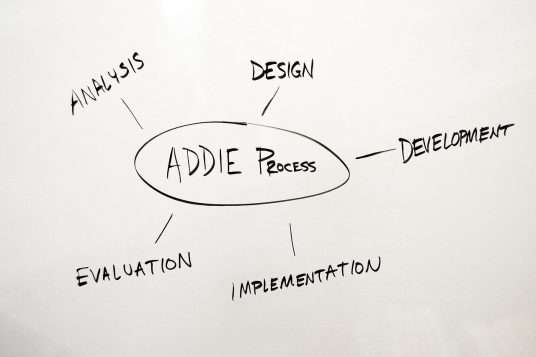Instructional design models are frameworks that help instructional designers and educators create effective learning experiences. These models provide a systematic approach to the design, development, and delivery of educational content. There are several instructional design models to choose from, each with its own strengths and weaknesses. In this article, we will take a deep dive into one of the most popular instructional design models – the ADDIE model.
An introduction to instructional design models
Instructional design models are essential for creating effective learning experiences for students or trainees. An instructional design model is a framework that provides a systematic approach to the design, development, and delivery of educational content. It helps educators and instructional designers ensure that the learning experience meets the objectives of the course or training program.
There are several instructional design models to choose from, each with its own unique features and benefits. These models vary in their approach to the design process, the format of the instructional materials, and the delivery method. Some models are more suitable for certain types of learning environments or subject matter.
Understanding the ADDIE model
The ADDIE model is one of the most popular instructional design models. ADDIE stands for Analysis, Design, Development, Implementation, and Evaluation. This model provides a systematic and iterative approach to the design and development of learning experiences.
The ADDIE model is a cyclical process, meaning that the steps are repeated until the desired learning outcomes are achieved. The model is flexible and can be adapted to different types of learning environments and subject matter.
The history of the ADDIE instructional design model
The ADDIE model has been around for several decades and has undergone many revisions. The model was first developed in the 1970s by the Center for Educational Technology at Florida State University. The original model consisted of four phases – Analysis, Design, Development, and Implementation.
Over time, a fifth phase – Evaluation – was added to the model, making it the ADDIE model that we know today. The model has been widely adopted by instructional designers and educators around the world and has become a standard approach to instructional design.
The five phases of the ADDIE model
The ADDIE model consists of five phases: Analysis, Design, Development, Implementation, and Evaluation.
Analysis
The Analysis phase is the first step in the ADDIE model. In this phase, the instructional designer identifies the learning needs of the target audience and the goals of the course or training program. The designer also conducts a needs assessment to determine what the learners already know and what they need to learn.
Design
In the Design phase, the instructional designer creates a blueprint for the course or training program. This includes the learning objectives, lesson plans, assessment strategies, and instructional materials. The designer also determines the format of the instructional materials, such as text, video, or interactive media.
Development
In the Development phase, the instructional designer creates the instructional materials. This can include writing the text, creating graphics or videos, and developing interactive media, such as video games. The designer also tests the materials to ensure that they are effective and aligned with the learning objectives.
Implementation
In the Implementation phase, the instructional materials are delivered to the learners. This can include classroom instruction, online courses, or other forms of delivery. The instructional designer may also provide training to the instructors or facilitators who will be delivering the course or training program.
Evaluation
In the Evaluation phase, the effectiveness of the learning experience is assessed. This includes assessing the learners’ progress towards the learning objectives, evaluating the effectiveness of the instructional materials, and gathering feedback from the learners and instructors. The evaluation results are used to improve the course or training program for future learners.
Advantages and disadvantages of the ADDIE model for instructional design
Like any instructional design model, the ADDIE model has its advantages and disadvantages.
Advantages
- The ADDIE model provides a systematic and iterative approach to instructional design.
- The model is flexible and can be adapted to different types of learning environments and subject matter.
- The model emphasizes the importance of evaluation, which helps ensure that the learning experience is effective and meets the objectives of the course or training program.
Disadvantages
- The ADDIE model can be time-consuming and expensive to implement, especially if the instructional materials are complex or require a lot of development.
- The model may not be suitable for certain types of learning environments or subject matter.
- The model may not be suitable for learners who have different learning styles or preferences.
Other popular Instructional design process models
SAM
The SAM (Successive Approximation Model) is an iterative model that emphasizes collaboration between the instructional designer and the learners. The model consists of three phases – Preparation, Iterative Design, and Implementation.
Rapid Prototyping
Rapid Prototyping is a model that emphasizes a quick and iterative approach to instructional design. The designer creates a prototype of the instructional materials and tests it with learners to gather feedback. The model is flexible and can be adapted to different types of learning environments and subject matter.
Dick and Carey Model
The Dick and Carey Model is a systematic and linear model that emphasizes the analysis of the learning needs and the development of objectives. The model consists of nine steps, including identifying the learning needs, developing instructional objectives, and developing instructional materials.
How to choose the right instructional design model for your project
Choosing the right instructional design model for your project depends on several factors, including the learning objectives, the target audience, and the delivery method.
Consider the learning objectives of the course or training program. Are they complex or straightforward? Do they require a lot of development or can they be achieved with simple instructional materials?
Consider the target audience. What is their learning style? Do they prefer classroom instruction or online courses?
Consider the delivery method. Will the course or training program be delivered in a traditional classroom setting or online?
Implementing the ADDIE model in your organization
Implementing the ADDIE model in your organization requires careful planning and preparation.
First, ensure that all stakeholders are on board and understand the benefits of the ADDIE model. Provide training to the instructional designers and instructors who will be using the model.
Develop a project plan that outlines the steps of the ADDIE model and the timeline for each phase.
Ensure that you have the necessary resources, including technology and personnel, to implement the model effectively.
Common mistakes to avoid when using the ADDIE model for instructional design
While the ADDIE model is a popular and effective instructional design model, there are several common mistakes to avoid when using the model.
- One common mistake is skipping the Analysis phase or not conducting a thorough needs assessment. This can lead to a mismatch between the learning objectives and the instructional materials.
- Another common mistake is not considering the learners’ needs and preferences. It is essential to design the instructional materials with the learners in mind and to consider their learning styles and preferences.
- Finally, failing to evaluate the effectiveness of the instructional materials can lead to a subpar learning experience. It is essential to gather feedback from the learners and instructors and to use the evaluation results to improve the course or training program.
Conclusion: Is the ADDIE model right for you?
The ADDIE model is a popular and effective instructional design model that provides a systematic and iterative approach to the design and development of learning experiences. It is flexible and can be adapted to different types of learning environments and subject matter.
However, choosing the right instructional design model for your project depends on several factors, including the learning objectives, the target audience, and the delivery method. The ADDIE model may not be suitable for all projects and may require a significant investment of time and resources.
Consider the benefits and drawbacks of the ADDIE model and other instructional design models before choosing the right one for your project. With careful planning and preparation, you can create effective learning experiences that meet the objectives of your course or training program.





